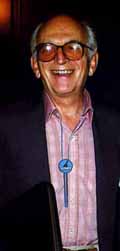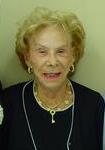![]() Samuel M. (Sam) Stayman (May 28, 1909, Worcester,
Massachusetts – December 11, 1993, Palm Beach, Florida) was a leading
bridge administrator, an innovator, an author and a successful business
man.
Samuel M. (Sam) Stayman (May 28, 1909, Worcester,
Massachusetts – December 11, 1993, Palm Beach, Florida) was a leading
bridge administrator, an innovator, an author and a successful business
man.
Stayman’s name became a household word in bridge circles when he described a convention developed by his partner, George Rapee, in The Bridge World, June 1945. In response to a 1NT opening bid, 2§ asks for a major suit. This became known as the Stayman Convention – familiar to bridge players throughout the world.
He contributed to The Official Encyclopedia of Bridge and wrote three books: Expert Bidding, The Complete Stayman System of Contract Bridge and Do You Play Stayman?
His contributions to bridge theory include Namyats (Stayman spelled backwards), which used an opening 4§ bid to show a strong hand with a long hearts suit and 4¨ to show a strong hand with a long spade suit.
Stayman won his first major NABC titles in 1942 when he took both the Vanderbilt and the Spingold, and his last (the Reisinger) more than four decades later in 1984. In all he captured 20 North American championships and was runner-up 14 times.
A World Bridge Federation Grand Master, he and George Rapée, Charles Goren, Howard Schenken, John Crawford and Sidney Silodor won the inaugural Bermuda Bowl in 1950. The January-February 1951 Bulletin reported:
At the close of the eighth and final session of the grueling battle of brains the Americans led England by 3660 points and were ahead of the Europeans by 4720 points.
Dr. Einar Werner, captain of the European team, said: “The Americans made few mistakes and had the advantage of a team composed of six good players, familiar with each other’s play.”
The following year, Stayman and Crawford, Schenken, Rapée and B. Jay Becker represented America in the World Team Championship in Rome.
They defeated Italy, winner of a European round-robin tournament, in a 320-board match played over a period of one week. Julius Rosenblum,1951 ACBL president and non-playing captain of the team, reported in the January-February 1952 Bulletin:
It gives me great happiness to say that the members of the American team distinguished themselves by their courtesy as well as by their bridge skill. It was a friendly, enjoyable match, and it will build for future international goodwill in bridge
The same team – with Theodore Lightner as a sixth member – defended their title successfully in 1953. In all, Stayman represented the ACBL six times in international competition. He won the silver in the 1964 World Team Olympiad.
As a bridge administrator, Stayman served several years as ACBL treasurer and was a trustee of the ACBL Charity Foundation. He was named ACBL Honorary Member in 1969 and American Bridge Teachers’ Association Honorary Member in 1979. He was president of the Cavendish Club in Manhattan from 1958 to 1972.
Born in Worcester MA in 1909, he took his A.B. degree from Dartmouth College in 1930 and his M.B.A. from Tuck Business College in 1931.
He was president of Stayman & Stayman until the mid-Sixties when he sold the business and became a portfolio and investments manager.
His wife Josephine, known as “Tubby”, is a tireless worker for her favorite charity, bridge games which contribute to the United Jewish Appeal. She was born in 1922 and her best result is the silver medal in World Mixed Transnationals of 1974.


